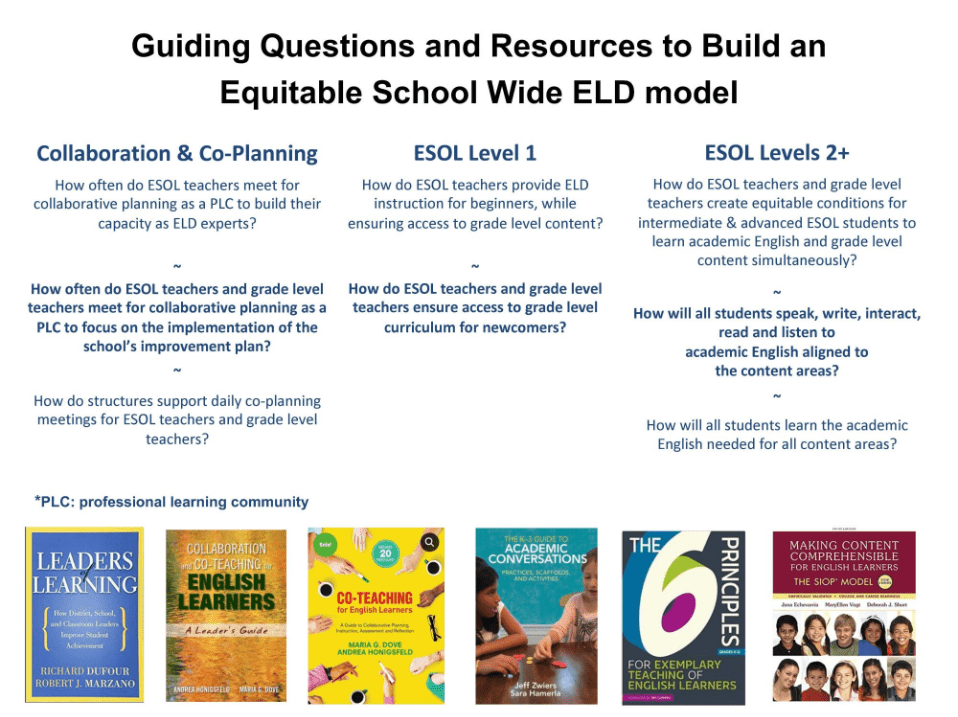THE FUTURE OF EL-CENTERED SCHOOL IMPROVEMENT BEGINS WITH A VISION FOR SCHOOLWIDE ENGLISH LANGUAGE DEVELOPMENT (ELD)

The Traditional Vision of ESOL Teacher as Case Manager
ESOL teachers “serve” equal numbers of ESOL students across grade levels. Individual ESOL teachers determine the curriculum, service delivery model (pull-out/plug-in), and amount of time provided for ESOL instruction.
A New Vision of ESOL Teacher in a High EL-Enrollment School
ESOL and grade-level teachers form professional learning communities to create equitable conditions for all students to learn academic English and grade-level content simultaneously.
Creating Equitable Conditions for Schoolwide ELD: A Shift in the Role of ESOL Teachers
Assignment of ESOL Teachers:
• ESOL teachers are assigned to each grade level K-5. ESOL teachers are part of the grade-level team to which they are assigned.
• One ESOL teacher is the lead teacher of professional learning and directs support to all teachers.
ESOL Teachers Will:
• Develop language objectives aligned with grade-level content objectives.
• Collaborate extensively and co-plan lessons with their grade-level teams to differentiate academic content for ELs at various levels of proficiency in English.
• Plan academic conversations for ELs to demonstrate and extend their thinking when speaking and writing in the academic subject areas. Students will build proficiency in using content vocabulary, language forms and conventions, and linguistic complexity when writing in the academic subject areas.
• Ensure that accommodations are used during instruction.
• Form a professional learning community focused on the adult learning needed to implement the ELD across the curriculum approach.
• Monitor the development of academic English on a regular basis using the WIDA interpretive rubrics.

Initiate your journey to transformative change by building an equitable schoolwide ELD model.
The steps and the materials needed are available here.

